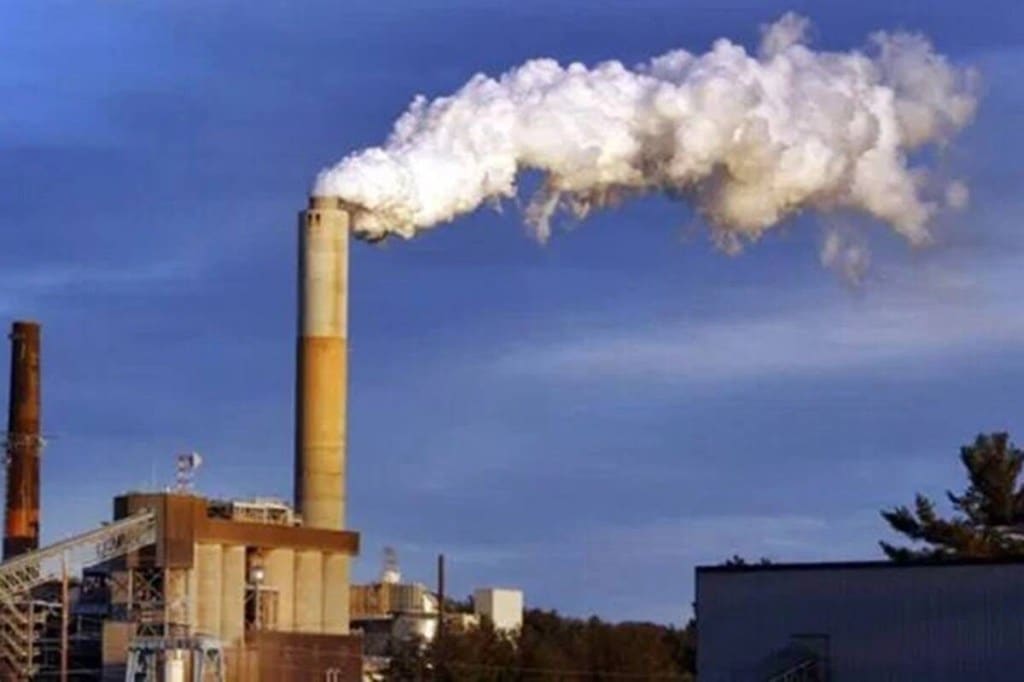Finance minister Nirmala Sitharaman recently flagged “climate tariff walls” as an impending cost, days after European Union (EU) nations reached an agreement on implementing the Carbon Border Adjustment Mechanism (CBAM). Sarthak Ray takes a look at the EU’s CBAM push and its implications for India.
Carbon border adjustment mechanism (CBAM)…
Last year, in July, the European Commission introduced the CBAM as one of the measures to aid the EU in bringing its emissions down by 55% from 1990 levels by 2030. The CBAM is a levy on the import of iron & steel, electricity, cement, aluminium, and fertiliser. Under the CBAM, EU importers will have to buy carbon certificates corresponding to the carbon price that would have been paid had the goods been produced under the EU’s carbon pricing rules.
If a non-EU producer has already paid for the emission in the country where the production took place, the EU importer can claim deductions from their CBAM liability against this. The reporting system will kick in from 2023, and the levy itself will be applicable from January 2026.
Why is the EU implementing the CBAM?
The EU believes that as climate policies elsewhere remain “less stringent”, there is a possibility of ‘carbon leakage’ — EU-based companies could move emission-intensive production to jurisdictions with lax standards, or EU products could be replaced by cheaper but more carbon-intensive imports. The CBAM, therefore, is a “price equaliser”. The EU also sees it as a replacement for free allowances under its Emissions Trading System (ETS), which address leakage but don’t incentivise green production within the EU.
Some non-EU countries, however, call this protectionism in the garb of green action. Another school of thought says the EU is likely to use the CBAM as “a lever to enforce carbon pricing internationally” rather than being a lone wolf and inviting trade backlash. The EU also sees the CBAM as a revenue source for its Budget.
Other green walls
In the US, California implements an emission border adjustment mechanism that makes its power importers liable for the emissions from generation in the state from which they import power. The Biden administration also speaks of carbon border adjustment in its Plan for a Clean Energy Revolution and Environmental Justice. Canada and Japan are also working on their own mechanisms.
India’s stand
India, along with China, Brazil, and South Africa, opposed carbon border taxes at the COP27. This grouping has said such taxes could “result in market distortion” and “aggravate trust deficit among the Parties”. Developing countries say the CBAM puts the burden of climate action on them, while it is the rich nations that have contributed the most to warming. However, the FM’s latest interaction with industry suggests India is mulling over policies that can help Indian exporters to the EU reduce such costs.
What does it mean for nations exporting to the EU, particularly India?
EU says its CBAM is WTO-compliant, but many countries are considering challenging it before the global trade regulator. A Rabobank research from 2021 placed India, along with Russia, Ukraine, Turkey, and China, among the countries that are potentially most affected by the move.
India exports about $2 billion worth of products annually to the EU that would attract the CBAM levy. Most of it is in the iron and steel space, with aluminium making up the rest. Nearly 35% of India’s exports that would qualify for the CBAM levy are to the EU. While the UK and China have significant exposure too, what works to their advantage is the existence of their national carbon markets that would allow EU importers to defray part of the CBAM levy for purchases from producers in these countries. Only three among the top 12 exporters of CBAM products to the EU have emission trading systems in place. The UK is likely to get a full exemption since its ETS mirrors the EU’s. (The European Commission will peg the CBAM to its ETS in a way that the price of the former reflects the average weekly price of ETS auctions.) Whether India, even if it rolls out its carbon pricing policy, can be on a par to earn substantial exemptions remains to be seen.
* $2 billion: India’s CBAM exports to the EU
* India’s CBAM exports to the EU account for 35% of its total CBAM exports
* 2023: EU CBAM reporting deadline
* 2026: enforcement deadline
Source: RABOBANK, EC

